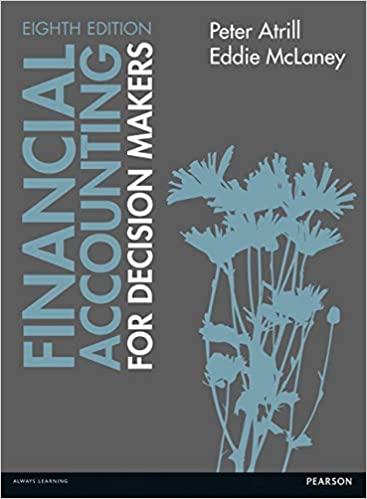Hillyard Company, an office supplies specialty store, prepares its master budget on a quarterly basis. The following data have been assembled to assist in preparing the master budget for the first quarter: a. As of December 31 (the end of the prior quarter), the company's general ledger showed the following account balances: Cash Accounts receivable Inventory Buildings and equipment (net) Accounts payable Common stock Retained earnings 44,000 203,200 58,350 354,000 $ 86,325 500,000 73,225 $ 650,550 S 659,550 b. Actual sales for December and budgeted sales for the next four months are as follows: December (actual) January February March April $ 254,000 $ 389,000 $ 586,000 $ 300,000 $ 197,000 C. Sales are 20% for cash and 80% on credit. All payments on credit sales are collected in the month following sale. The accounts receivable at December 31 are a result of December credit sales. d. The company's gross margin is 40% of sales. (In other words, cost of goods sold is 60% of sales.) e. Monthly expenses are budgeted as follows: salaries and wages, $19,000 per month: advertising, $59,000 per month; shipping, 5% of sales; other expenses, 3% of sales. Depreciation, including depreciation on new assets acquired during the quarter, will be $42,740 for the quarter. f. Each month's ending inventory should equal 25% of the following month's cost of goods sold. g. One-half of a month's inventory purchases is paid for in the month of purchase; the other half is paid in the following month. h. During February, the company will purchase a new copy machine for $1,400 cash. During March, other equipment will be purchased for cash at a cost of $72,000. i. During January, the company will declare and pay $45,000 in cash dividends. j. Management wants to maintain a minimum cash balance of $30,000. The company has an agreement with a local bank that allows the company to borrow in increments of $1,000 at the beginning of each month. The interest rate on these loans is 1% per month and for simplicity we will assume that interest is not compounded. The company would, as far as it is able, repay the loan plus accumulated interest at the end of the quarter. 4. Prepare an absorption costing income statement for the quarter ending March 31. 5. Prepare a balance sheet as of March 31. Complete this question by entering your answers in the tabs below. $ 1.275,000 Hillyard Company Income Statement For the Quarter Ended March 31 Sales Cost of goods sold Beginning inventory 765,000 Goods available for sale Purchases 765,000 Ending inventory Gross margin Selling and administrative expenses Other expenses 336,000 Depreciation 42.760 765,000 510,000 Net operating loss Interest expense Net Income 378,760 131,240 2.400 128,840 $ (Required 3 Required 5 > Hillyard Company Balance Sheet March 31 Assets Current assets: $ Cash Accounts receivable Inventory 85,150 240,000 29,550 354,700 384,660 739,360 $ Total current assets Buildings and equipment, net Total assets Liabilities and Stockholders' Equity Current liabilities: Accounts payable $ 82.275 Stockholders' equity Common stock Retained earnings $ 500,000 157.085 657,085 739,360 Total liabilities and stockholders' equity $ (Required 4











